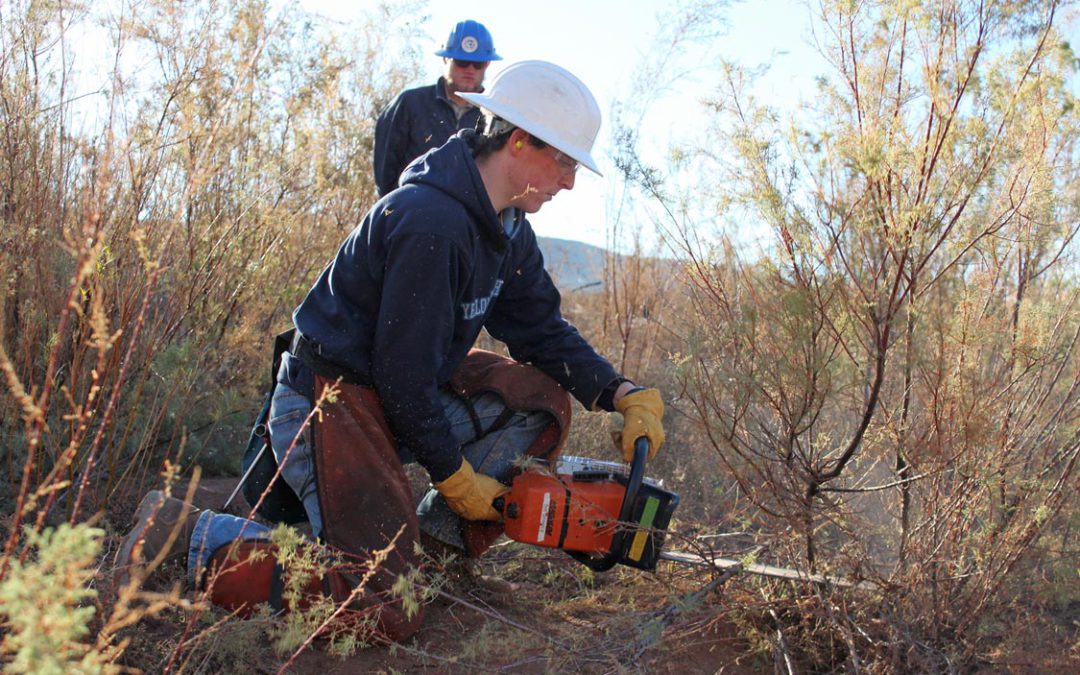Last week, a crew finished a hitch working on the Virgin River near St. George, Utah. Crews have been hard at work removing invasive Tamarisk trees from the banks of the Virgin River.
Tamarisk is extremely invasive in riparian areas, often completely replacing native vegetation with impenetrable thickets of the plants. In this particular area, Tamarisk has altered the morphology of the river, negatively impacting the habitat of the native flora and fauna. A goal of the project is to initiate the process of restoring the area to its original state, ensuring that native species can reestablish and flourish once more.

Crew leader Michael Stapleton shows some corps members a topographical map of the area they will be working in.
Where once the river was shallow and wide — ideal conditions for native fish species such as the wound fin and the Virgin River chub — the Tamarisk trees now grow so thick that their huge root systems prevent the natural erosion of the bank. As a consequence, the river becomes centralized, deep, and cold. This type of non-historic river morphology causes challenging conditions for these two endangered species.
The project also seeks to re-establish nesting sites for the Southwestern willow flycatcher, an endangered species of bird that lives in riparian areas and whose habitat has been altered by the invasion and establishment of stands of pure Tamarisk. ACE is partnered with BLM, the Virgin River Partnership, and the Utah Division of Wildlife Resources on this project, which has been ongoing throughout 2015. “I’ve always been really impressed with ACE,” said project partner Bob Douglas. “They have great work ethic and they are very safety conscious.”

Corpsmembers clip the smaller Tamarix stalks with loppers, being careful to avoid cutting any young native willow saplings
This project has required many hours of very hard work over a long period of time, and the efforts of everyone involved will help to restore this area to it’s original state.




